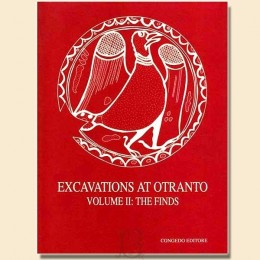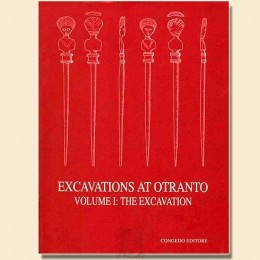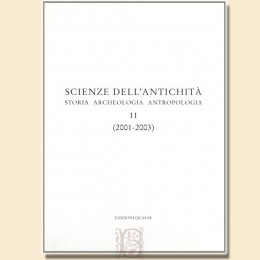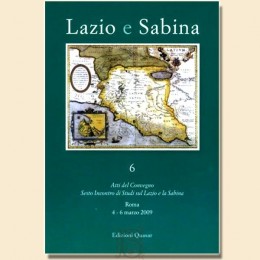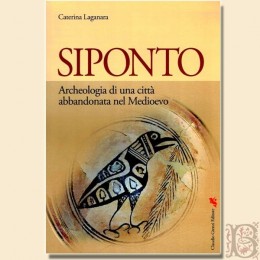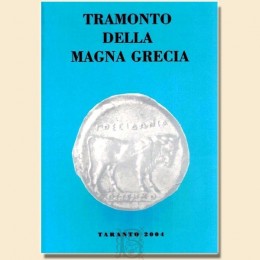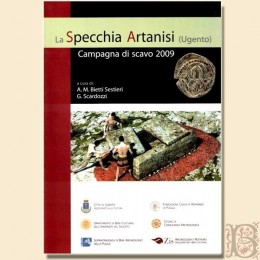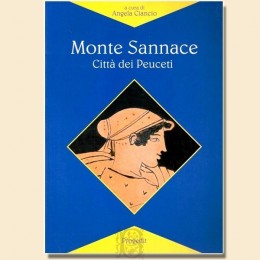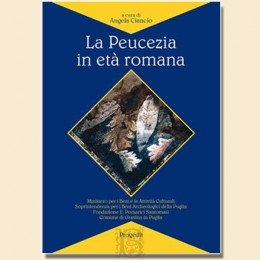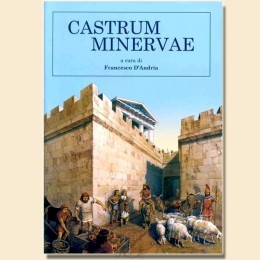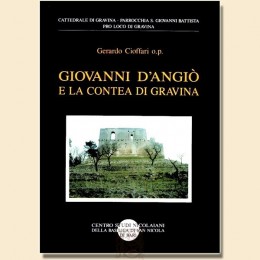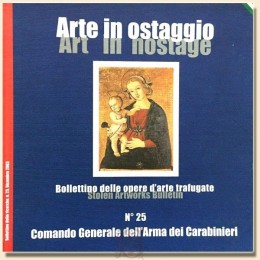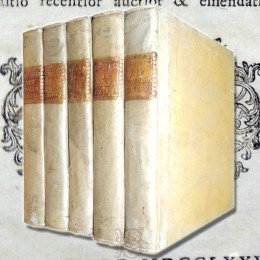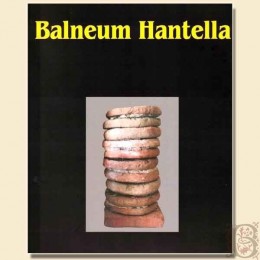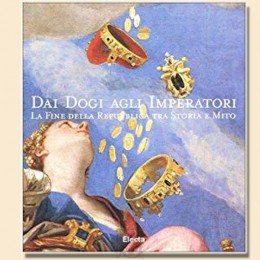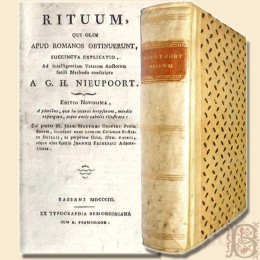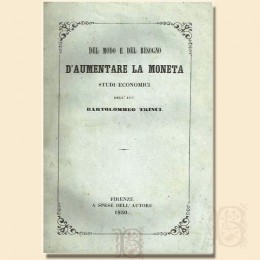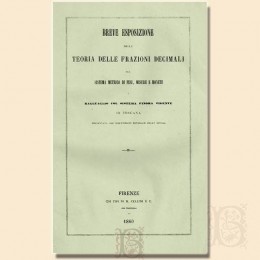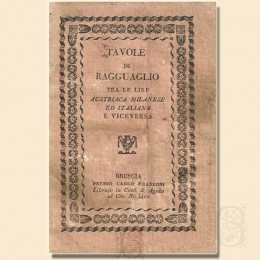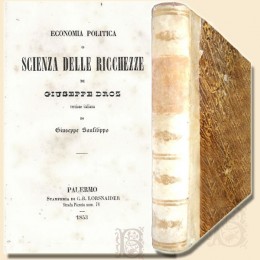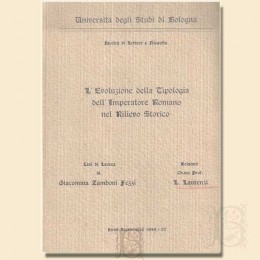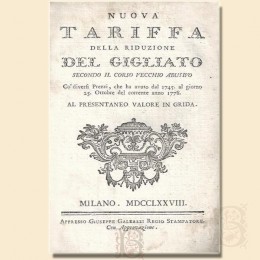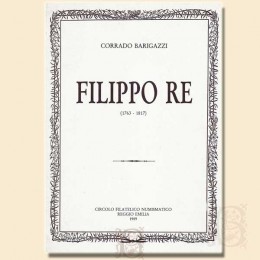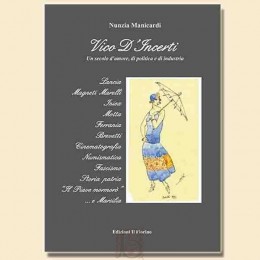Resources
Welcome to the Varia section, a collection of studies and books that encompass a wide range of disciplines, all somehow connected to numismatics. In this category, you will find works ranging from archaeology to history, from epigraphy to topography, including disciplines such as anthropology, art history, and ancient economy. These texts have been selected for their value in enriching the understanding of numismatics through diverse and complementary perspectives. Whether you are a collector, a scholar, or a history and culture enthusiast, this collection offers valuable resources to deepen your understanding of the historical and cultural context of coins. Each book and study in this section provides a unique contribution to numismatic studies, exploring themes and topics that intersect with the science of coins and offer new insights. Explore our Varia collection and discover how these disciplines interact, enriching your knowledge of numismatics.
-
Excavations at Otranto, vol. II,...
€35.00Excavations at Otranto, vol. II, The finds, edited by Francesco D'Andria, David Whitehouse, Congedo Editore, Galatina 1992, pp. 369, richly illustrated, 29 cm, br. and. with dust jacket.
Series of the Department of Sciences of Antiquity. Historical-archaeological sector. University of Lecce, 6. Among the various contributions present is the study by Adriana Travaglini dedicated to coins. Other writings: Introduction, David Wilkinson; Pre-Roman ceramics, Grazia Semeraro; African and micro-Asian ceramics, Maria Teresa Giannotta; Common pre-Roman and Roman pottery, Grazia Semeraro; The oil lamps of the Roman age, Maria Teresa Giannotta; Medieval Domestic Pottery, Helen Pattersona, David Whitehouse; Aphorae for Bulk Transport, Paul Arthur; Roman and medieval glass, Maria Teresa Giannotta; The Small Objects, Martin Hicks, Alison Hicks; The Animal Bones: A Preliminary Assessment of the Stock Economy, Judith Cartledge, Gillian Clark, Valerie Higgins; The Avifauna, Sheila Sutherland; The Fish Remains, Andrew KG Jones, The Marine and Fresh-water Shells, David Reese.
Small signature of possession on the title page.
Very slight traces of use, otherwise in excellent condition.
-
Excavations at Otranto, vol. I,...
€24.00Excavations at Otranto, vol. I, The excavation, edited by Demetrios Michaelides, David Wilkinson, Congedo Editore, Galatina 1992, pp. 192, richly illustrated, 2 large plates. folded, 29 cm, br. and. with dust jacket.
Series of the Department of Sciences of Antiquity. Historical-archaeological sector. University of Lecce, 5.
From the Index: Introductions, Demetrios Maichaelides, Davis Wilkinson; Otranto in medieval history, Thomas S. Brown; Summary and discussion, David Wilkinson; Stratigraphy, Phases I an II (The Roman cemetery) Marshall J. Becker, Maria Teresa Giannotta, Grazia Semeraro, Adriana Travaglini, David Wilkinson; Stratigraphy, Phases III to VIII, David Wilkinson; The Human Bones, Marshal J. Becker.
Small signature of possession on the title page.
Very slight traces of use, otherwise in excellent condition.
-
Sciences of Antiquity, n. 11,...
€74.00Sciences of Antiquity. History, Archeology, Anthropology, Quasar Editions, Rome, n. 11, 2001-2003, pp. 592, richly illustrated, 29 cm, br. and.
The volume includes the following contributions of numismatic interest: Arnaldi, Oceanus on coins and epigraphs; Bini, Bella this coin, how did they manage to make it? The answer is too simple: by coinage; M. Caccamo Caltabiano-P. Radici Colace, The history of Roman money in the Anonymous of the de rebus bellicis between ideology and economic-monetary realities; P. Calabria, Dikaiosyne, J.-P. Callu, Les impératrices pieuses et heureuses; Cazzella, Counting and weighing in the central Mediterranean during the Bronze Age; F. Ceci, A solid by Marciano and some aspects of the monetary iconography between paganism and Christianity; Cutroni Tusa, The mint of Agrigento during the second Punic war; F. della Ratta-Rinaldi, Monetary finds from Formello (Rome) and its territory; G. Dembski, Eine Goldfibel mit Stater Alexander III. aus Carnuntum; Di Vita, storeroom of Byzantine folles from Gortina (Crete); G. Gorini, Greek coins from Polesine; GL Gregori, Between numismatics and epigraphy: on the subject of congiarium, liberalitas, largitio and munificentia on coins and in inscriptions; G. Libero Mangieri, Two treasures of medieval coins from southern Italy; DF Maras, Numismatics and epigraphy. New observations on the qetis and leqez legend series; Morandi, Observations on some Etruscan monetary legends; F. Mori, Numismatique et préhistoire: un rapport indéniable mais submergé; NF Parise, Syrian measures and Mesopotamian measures in the Bronze Age; T. Pàroli, Coins and Gospels in England in the early Middle Ages; P. Pensabene, On some leaded cards for commercial use; R. Pera, On a Narbonense axis found in Savona; Perassi, Salonino's gold coin with frame from the excavations of the Catholic University of Milan; V. Picozzi, Antemio's Milanese Solido with an irregular mintmark; M. Rat-A. Castellotti, A golden shield of Gregory XIII of which only the memory remained; P. Serafin, A golden quinary from the Tiber; L. Villaronga, The Roman denarius weighed in the treasures of the Iberian Peninsula. Other contributions: E. Ascalone, The indigenous and the foreigner. Development of new integrative cultural paths between the second half of the III and the beginning of the II millennium BC on the Iranian plateau and in Susiana; D. Nadali, War and death: the annihilation of the enemy in the condition of being defeated; L. Nigro, The Rimush da Tello stele and the indication of the rank of the vanquished in the royal relief; L. Peyronel, Merchants in Susiana? Archaeological and epigraphic evidence on cultural relations between the Persian Gulf and southwestern Iran at the beginning of the 2nd mill. B.C; F. Pinnock, Foreign women and conquered women in Mesopotamian figurative culture: enemy women. The suburb: U. Fusco, Settlement dynamics in the north-eastern suburbs of Rome between the Republic and the Principality. Form and function: J. Evans-G. Recchia, Pottery function: trapped residues in Bronze Age pottery from Coppa Nevigata (Southern Italy); FR Stasolla, Between form and function: mortars in the Middle Ages; G. Vallarino, Objects for the combustion of aromas from Delos: the form and use in terminology; Recent discoveries: L. Nigro, A terracotta furniture shaped like an aeolian capital from Mozia. Lectures by the department: F. Wendorf-R. Schild, The Late Paleolithic burials at Jebel Sahaba: the earliest known warfare. Organ of the Department of Historical, Archaeological and Anthropological Sciences of Antiquity, this journal collects the results of aggregated research in thematic areas in the perspective of an integrated study of ancient societies in all their aspects - environmental, technological, economic, social, political, artistic , ideological - considered as interacting elements in systems with specific transformation dynamics. The studies that converge in it are conducted on different documentary materials - archaeological, philological-epigraphic, ecological-naturalistic, etc. - through equally different methodologies and analytical techniques, in view of the convergence of disciplines in a wider reciprocal interaction. The chronological and geographical location goes from prehistory to late antiquity and the Middle Ages, even if the prevailing interests are concentrated in the ages ranging from the near-eastern and European neolithization to the Greek and Roman world. The eleventh volume, relating to the years 2001-2003, includes essays divided into four themes that broaden the scientific interests to a broad geographical horizon, covering a chronological period from the prehistoric age to the Middle Ages.
Small signature of possession on the title page.
Slight signs of aging on the paperback, otherwise in excellent condition.
-
Lazio and Sabina
€50.00Lazio and Sabina, edited by Giuseppina Ghini, Quasar Editions, Rome 2010, pp. 506, richly illustrated, cm 30 br. and.
Proceedings of the Conference of the Sixth Meeting of Studies on Lazio and Sabina, Rome, 4-6 March 2009.
At the top of the title page: Ministry for Cultural Heritage and Activities, Superintendence for Archaeological Heritage of Lazio.
The contribution of numismatic interest should be noted: M. Labate, Black-painted pottery and numismatic finds from the sanctuary of Trebula Mutuesca, some chronological clarifications. Other contributions: MF Rolfo, D. Mancini, L. Salari, A. Zarattini, The cave of “Mora Cavorso” in Jenne (Rome). New research; T. Mattioli, The rock paintings of the cave of the Arch of Bellegra (Bellegra, Rome); P. Pensabene, A. Ottati, New evidence of Doric architecture in Villa Adriana; R. Hidalgo, The so-called Greek Theater of Villa Adriana: issues of identification and interpretation; B. Adembri, GE Cinque, Technique and technology in the Edificio con Peschiera; C. Annunziata, The sculptures of the villas of Colle Nocello, Colle Vitriano and Chiesuola in the ager Tiburtinus; CH Steffensen, B. Tang, C. Trier, Preliminary report of the excavation campaigns of 2007-2008 in the Nomentum area (Mentana, Rome); S. Sgalambro, Trajan's Villa in Arcinazzo Romano: analysis of the planimetric scheme of the lower stalls; MG Granino Cecere, Canteens registered by Nomentum; F. Marino, The church of S. Giovanni del Castrum Statiani in Palombara Sabina; M. Rubini, P. Zaio, The site of the "marked" by God: Palombara Sabina; G. Alvino, Sabina and Cicolano: an update on research; G. Masci, The cities of the Sabines; A. Festuccia, C. Ranieri, Archaic aqueducts and drainage systems in the Ager curense; E. Giummarra, The Sambuco Bridge in Torricella in Sabina. Infrastructures and roads in the ancient age; F. Marzilli, Studies on Casperia; F. Santini, The “hunting companions”: from historical sources to the faunal finds of the villa dei Brutti Praesentes (Scandriglia, Rieti); F. Lezzi, Contribution to the knowledge of Crimes; MF Perotti, The villa cd. Torone near Rieti; F. Squadroni, The territory of Amatrice (Rieti): Roman epigraphs from a border area; R. Cascino, C. Filippone, Funeral kits from the necropolis of Falacrinae (Cittareale, Rieti); E. Farinetti, Cicolano Survey 2008. On the Roman landscape in the plain of Corvaro; V. d'Ercole, A. Martellone, The Sabine necropolis of Montereale (L'Aquila). Colli Albani and Tuscan area: S. Kay, S. Hay, The geophysical investigations conducted by the British School at Rome in Lazio: results and perspectives; E. D'Ambrosio, B. Giaccio, L. Lombardi, F. Marra, MF Rolfo, A. Sposato, The recent activity of the Albano eruptive center between science and myth: a critical analysis of the relationship between the Lazio volcano and the history of the Albanian area; A. De Angelis, F. Altamura, R. Monti, A. Pancotti, The Roman necropolis in Le Zite a Colonna; A. Betori, AL Fischetti, Archaeological finds in loc. Marcandreola in Ciampino (Rome); N. Terrenato, A. Gallone, JA Becker, S. Kay, Orthogonal Urbanism in Gabii. Results of the new geophysical prospecting and prospects for the future; S. Helas, Geophysical prospecting in Gabii: interpretations and perspectives for a study of the walls; A. D'Alessio, M. Di Lieto, M. Maiuro, A. Misiani, Archaeological evidence in the territory of Rocca di Papa (Rome): possible topographical themes and first project contents in support of urban planning tools; L. Attenni, Archaeological evidence in the municipal area of Lanuvio (Rome); etc.
Small signature of possession on the title page.
In excellent condition.
-
Siponto. Archeology of an...
€36.00Siponto. Archeology of an abandoned city in the Middle Ages, edited by Caterina Laganara, Claudio Grenzi Editore, Foggia 2011, pp. 231, richly illustrated, 31 cm, br. and.
The volume includes a contribution by Giuseppe Sarcinelli dedicated to coins. Other contributions are signed by: Gianluca Andreassi, Sabino Edoardo Andriani, Patrizia Albrizio, Gabriella Bozzi, Austacio Busto, Giovina Caldarola, Ida Maria Catalano, Maria Antonietta Catamo, Giuseppe Ceraudo, Marcello Ciminale, Pasquale Corsi, Ginevra d'Onofrio, Giuseppe Daurelio , Giuseppe De Benedetto, Antonella Di Marzo, Emanuela Elba, Giacomo Eramo, Giulia Finzi, Danilo Gallo, Alessandra Genga, Patrizia Gentile, Lorena C. Giannossa, Caterina Laganara, Rocco Laviano, Katia Luzio, Annarosa Mangone, Tiziana Mastracci, Gioacchino Micocci, Raffaella Palombella, Gabriella Passatelli, Comasia Petronella, Daniela Pinto, Daniela Rossitti, Mariangela Sammarco, Maria Siciliano, Tiziana Siciliano, Antonio Tepore, Angela Traini, Anna Maria Tunzi, Adriana Valchera, Inez van der Werf, Enrica Zambetta. Recognize the modalities of the abandonment of ancient Siponto - already a Roman colony in the 2nd century BC, then an early bishop's seat that with alternating vicissitudes through a long history of settlement - and give a face to the city, of which today episodic material traces, albeit marked relevance, essentially reproduce the same landscape known to ancient travelers, is the intent of this study. Making use of the most up-to-date methods on the ground and in the laboratory, the archaeological investigation begins to define the layout of a suburban urban area, close to the northern limit of this important port center on the Adriatic that relives in the memory of today's town of Manfredonia. developed immediately further north, without apparent continuity with the site of the ancient ruins due to the recent formation of the interposed tourist village of Siponto. Walls, houses, religious and funerary spaces, streets with external circulation areas together with the multiple aspects of the lively urban socio-economic reality and the daily life of its inhabitants are returned by a work in progress, part of an integrated program between the Superintendence for Heritage Archaeologists of Puglia and the University of Bari. The results of the first five excavation campaigns, carried out in the form of the school-field starting from 2000, presented in this volume, the realization of which was possible thanks to the funding of several Bodies , are also available in the permanent exhibition set up in the National Museum of the Castle of Manfredonia, where in an unprecedented form past and present coexist in the material remains and in the scientific-technological experimentation that decodes even the most faint traces. A volume that introduces the reader to the intriguing world of circumstantial disciplines, of which archeology is a part, and which offers a valid tool for those who intend to approach it.
Very slight traces of use on the paperback, otherwise in excellent condition.
-
Sunset of Magna Graecia, vols. 2
€30.00Sunset of Magna Graecia, vols. 2, Institute for the History and Archeology of Magna Graecia, Taranto 2005, pp. 835-854, 100 plates, 24 cm, br. and.
Second volume with the tables of the Proceedings of the forty-fourth Conference of Studies on Magna Graecia, Taranto 24-28 September 2004.
In excellent condition.
-
La Specchia Artanisi (Ugento)
€24.00La Specchia Artanisi (Ugento). Excavation campaign 2009, edited by Anna Maria Bietti Sestieri, Giuseppe Scardozzi, Tipografia Marra, Ugento 2010, pp. 94, richly illustrated, 24 cm, br. and.
The volume includes a contribution by Aldo Siciliano and Giuseppe Sarcinelli entitled Group of Byzantine folles of the 11th century: “purse” or “emergency” closet?
In excellent condition.
-
Monte Sannace city of the Peuceti
€25.00Monte Sannace city of the Peuceti, edited by Angela Ciancio, Progedit, Bari 2001, pp. 143, richly illustrated, 24 cm, br. and.
Series: Itineraries.
Monte Sannace is an archaeological site near Gioia del Colle (Bari), where for decades an ancient Peucetian city has re-emerged piece by piece, with the acropolis, the urban structures, the large walls, the civilian settlement in the plain and the sacred and administrative architecture on the top of the hill. But where, at the same time, an environmental park is being preserved, with a nature trail among the green Mediterranean flora of fragni, downy oaks, holm oaks, but also strawberry trees, myrtle, viburn. The union is underlined by this text, edited by Angela Ciancio, director of the park and of the National Archaeological Museum of Gioia. The book intends to disseminate the great mass of scientific writings published so far on the archaeological settlement, updating them with the most recent acquisitions. And to do this it avails itself of the contribution of a series of specialists, who in essential chapters present all the aspects related to the site, from the geological to the residential ones, from the numismatic emergencies to the ceramic imports from ancient Greece, from the tombs found so far (more of two hundred) to the wall frescoes that adorn some of them. The coins testify to trafficking with other Peucezie cities such as Ceglie and Bari, with the Greeks Taranto, Eraclea and Naples. But the lack of pieces minted in the imperial period reinforces the hypothesis of the gradual abandonment of the site starting from the second century. d. C. In the volume Giuseppe Libero Mangieri presents the treasure re-emerged on the acropolis in the 1930s and datable to the arrival in Puglia of Pirro King of Epirus to help Taranto. That early third century was a terrible period for Peucezia. And evidently the owner of these coins, forced to flee, preferred to bury them in a safe place, with the idea of recovering them, once the danger was avoided.
In excellent condition. Uncommon publication.
-
Peucezia in Roman times
€18.00Peucezia in Roman times. The archaeological and topographical picture, edited by Angela Ciancio, Progedit, Bari 2002, pp. XIV, 140, richly illustrated, 24 cm, br. and.
Series: Itineraries.
During the Augustan principality, the term “Peucezia”, now in disuse, no longer indicates any political-juridical individuality, and the “Peuceti” represent only a learned historical-geographical quotation. However, it cannot be excluded that the implementation of the process of integration with the Roman-imperial system by the communities belonging to this territorial district is influenced by the socio-economic specificities and cultural heritage of the area. The dynamics underlying this evolutionary phase are still not sufficiently known, since the analysis of the archaeological evidence of the period coming from this part of the Apulian region is still partial. The field researches of recent years in central Puglia, however, enrich the epigraphic documentation and material culture by offering new elements of knowledge and opportunities for reflection on a still hazy period of ancient Apulian history.
In excellent condition.
-
Castrum Minervae
€30.00Castrum Minervae, edited by Francesco D'Andria, Congedo Editore, Galatina 2009, pp. 299, richly illustrated, 25 cm, br. and with dust jacket.
Series: Archeology and history, 9.
Work with numismatic references, including the contribution of Giuseppe Sarcinelli, Coin Findings from Castro, in which ancient, medieval and modern coins are presented. The exhibition, of which the volume is the catalog, is the culmination of a long path of collaboration between the Municipality of Castro, the Superintendence for Archaeological Heritage of Puglia and the University of Salento. From that agreement an operational practice was born in which the young archaeologists of the University, with their commitment and enthusiasm, have produced extraordinary scientific results. Between resumptions and new interruptions, the great fortified wall of the Hellenistic town began to emerge more and more clearly, then the votive deposits appeared which allowed to identify an extensive cult complex that dominated the landing place and the stretch of coast up to Capo di Leuca, the ancient iapigio promontory. The votive offerings, the architectural fragments, the wall structures thus formed a mosaic in which the literary testimonies on the Athenanion of the head of Hapygus, merged into book III of Virgil's Aeneid, took shape. The turning point had finally come in May 2008, when Amedeo Galati and Emanuele Ciullo, during the cleaning of an excavation section, had found a bronze statuette of Athena Iliaca with a Phrygian helmet. Now we are working to create the itinerary at the foot of the walls, through the terraced gardens that still surround the town; you can thus admire the large block walls built by the Messapi, the mighty Spanish structures superimposed on them and turn your gaze to the extraordinary panorama of the rocks overlooking a very blue sea, up to the mountainous coasts of Albania, which sometimes reveal themselves, especially in the coldest days of winter. Together with the Castle, the Romanelli Caves and Zinzulusa, the Romanesque Cathedral is becoming increasingly accessible to a unique cultural heritage, even in Salento so rich in evidence of its history and natural beauty.
In excellent condition.
-
Cioffari, Giovanni d'Angiò and...
€20.00Gerardo Cioffari, Giovanni d'Angiò and the county of Gravina, Nicolaiani Studies Center of the Basilica of San Nicola, Bari 1993, pp. 107, 8 plates, 24 cm, br. and.
Series: Memoirs and documents, 12.
At the top of the title page: Cathedral of Gravina. Parish of St. John the Baptist. Pro loco of Gravina.
Volume accompanied by beautiful images of coins, with enlargements, on coated paper.
Crease on the front cover, signs of wear over time, otherwise perfectly usable.
In excellent condition.
-
Hostage art. Bulletin of stolen...
€18.00Hostage art. Bulletin of stolen works of art, General Command of the Carabinieri, Rome, n. 25, December 2003, pp. 307, richly illustrated, 22 cm, br. and.
In excellent condition.
-
Sanctissimi domini nostra...
€420.00Sanctissimi domini nostra Benedicti Papae XIV. Bullarium. Editio recentor auctior & emendatior, 10 tomes in 5 volumes, Sumptibus Bartholomaei Occhi, Venetiis, 1767-1784, pp. 2443 in total, beautiful woodcut typography marks on the title pages, wonderful woodcut headers, end caps and initials, 24 cm, splendid coeval half-parchment bindings, titles and decorations in gold on leather inserts on the backs, artistically sprayed cuts.
Volume 1: Tomus primus, in quo continentur constitutiones, epistolae, aliaque edita ab initio pontificatus usque ad annum 1746, 1777, pp. XVI, 224. Linked with: Tomus secundus, in quo continentur constitutiones, epistolae, aliaque edita ab initio pontificatus usque ad annum 1746, 1777, pp. XII, 228.
Volume 2: Tomus tertius, in quo continentur constitutiones, epistolae, aliaque edita ab initio pontificatus usque ad annum 1748, 1767, pp. VIII, 232. Linked with: Tomus quartus, in quo continentur constitutiones, epistolae, aliaque edita ab initio pontificatus usque ad annum 1748, 1767, pp. IV, 231.
Volume 3: Tomus quintus, in quo continentur constitutiones, epistolae, aliaque edita ab initio pontificatus usque ad annum 1748, 1768, pp. 250. Linked with: Tomus sextus, in quo continentur constitutiones, epistolae, aliaque edita ab initio pontificatus usque ad annum 1750, 1768, pp. 224.
Volume 4: Tomus septimus, in quo continentur constitutiones, epistolae, aliaque edita ab initio pontificatus usque ad annum 1751, 1768, pp. 273. Linked with: Tomus octavus, in quo continentur constitutiones, epistolae, aliaque edita ab initio pontificatus usque ad annum 1755, 1782, pp. 241.
Volume 5: Tomus nonus, in quo continentur constitutiones, epistolae, aliaque edita ab initio pontificatus usque ad annum 1752, 1784, pp. 252. Linked with: Tomus decimus, in quo continetur appendix ad tomum IX, 1784, 248.
Large eighteenth-century noble ex libris inside the front plate of the first volume.
Some old signs of extinct woodworm on the back that do not affect the interior, otherwise volumes in excellent general condition with fresh paper.
Powerful, rare and complete work.
-
Cardella, Baldeum Hantella
€28.00Giuseppe Cardella, Baldeum Hantella, OffsetStudio, Palermo 2017, pp. 16, richly illustrated, 32 cm, br. and.
Archaeological publication with numismatic references.
In perfect condition. Extremely rare.
-
From doges to emperors. The end...
€24.00From doges to emperors. The end of the Republic between history and myth, Electa, Milan 1997, pp. 214, richly illustrated, 28 cm, br. and.
Catalog of the exhibition held in Venice in 1997.
Particularly interesting is the section of the work dedicated to coins and medals, in which the following contributions appear: Piero Voltolina, The last decades of the Republic in some medals of the Correr Civic Museum; Michele Asolati and Cristina Crisafulli, From the mint of the doges to the mint of the emperors.
In perfect condition.
-
Nieupoort, Rituum qui olim apud...
€110.00Rituum qui olim apud Romanos obtinuerunt succinta explicatio. Ad intelligentiam veterum auctorum easy methodo conscripta to GH Nieupoort, ex Typographia Remondiniana, Bassani 1803, pp. XXIV, 372, ill., 5 beautiful plates of which 3 reproducing coins, 18 cm, splendid coeval binding in half parchment with fillets, titles and decorations in gold on leather insert on the back, cuts sprayed in red.
Beautiful edition of 1803 of this eminent work on the uses and customs of ancient Rome made by Nieupoort (1670-1730), jurist and historian specializing in ancient history, teacher at the University of Utrecht. Among the topics covered: origins of Rome, division into tribes, senators, magistrates, consuls, praetors, plebs, quaestors, censuses, prefects, popular judgment, divinities (Jupiter, Minerva, Diana, Venus, Mars, Mercury, Vulcan, Saturn, Bacchus, Osiris, etc.), encampments, burials, etc. There is no lack of numismatic references accompanied by coin engravings.
In excellent condition.
-
Trinci, On the way and the need...
€90.00Bartolommeo Trinci, On the way and the need to increase the currency. Economic studies, at the author's expense, Florence 1850, pp. 196, 19 cm, br. and.
From the Index: Shortage of vehicles in circulation; The value of precious metals; Californian gold; Ways to raise the currency; Recall all precious metals at this office; Errors accepted in this regard by the most enlightened nations; Proposal of a tax on gold and silver jewelry; Statistics of non-minted metals; On precious metals and banks; Economic concept of circulation; Historical evidence of the present concepts drawn from antiquity and from the trade of the most flourishing Italian republics; etc.
Volume almost completely intact, in excellent condition, with very fresh paper.
Work of extreme rarity, missing in all specialized libraries repertoriate.
-
Presentation of the theory of...
€80.00Brief exposition of the theory of decimal fractions of the metric system of weights, measures and coins and briefing with the system so far in force in Tuscany, with the types of M. Cellini and C., Florence 1860, pp. 50, 24 cm, br. and.
Exemplary in an exceptional state of conservation, partially intact.
Extremely rare, missing in all the libraries listed.
-
Information tables between the...
€40.00Information tables between the Austrian Milanese and Italian lire and vice versa, by Carlo Franzoni, Brescia sd, pp. 32, cm 14, br. and. with title inside decorated panel.
Old signature on the reverse of the first guard card.
Traces of use, otherwise in good condition.
Extremely rare publication, missing in all listed libraries.
-
Droz, Science of riches
€70.00Giuseppe Droz, Political Economy or Science of Wealth. Italian version by Giuseppe Sanfilippo, Stamperia di GB Lorsnaider, Palermo 1853, pp. 260, 19 cm, beautiful coeval half parchment binding, marbled paper plates, gold friezes and fillets on the back, artistically sprayed blue cuts.
The volume deals with various topics, including: the purpose of the economy, money, cards that supply money, wealth, value, prices, production, different kinds of commerce, customs, rents, etc. . Joseph Francois Xavier Droz (1773-1850), an eclectic thinker originally from Besancon, also devoted himself to the study of philosophy and history, carving out a prominent role in the cultural landscape of France at the time. Droz condemned the revolutionary excesses and hoped for a renewal of society, in the relationship with individuals, based on a clearer distinction between rights and duties.
Old signs of extinct woodworm that do not compromise the legibility of the text, traces of use to the binding, however solid, and lack of the dowel on the spine, however the work is still usable.
-
Zamboni Fezzi, The evolution of...
€180.00Giacomina Zamboni Fezzi, The evolution of the typology of the Roman emperor in historical relief, supervisor Professor Luciano Laurenzi, University of Bologna, Faculty of Literature and Philosophy, Bologna 1950, pp. 176 typewritten on the recto, cm 29, br. with titles to the front plate.
Meticulous degree thesis, written according to scientific criteria, in which the author - through the filing and analysis of many works of the Roman imperial age - investigates the evolution of the iconography of the Roman emperor. The typescript, on watermarked paper, has several autograph corrections and additions and the ballpoint pen signature of Giacomina Zamboni Fezzi.
Professor Luciano Laurenzi (1902-1966), academician of the Lincei, distinguished archaeologist and historian of Greco-Roman art, was the author of numerous and appreciated publications. Among the many positions held, there are those of Superintendent of Antiquities of Milan, director of the Italian Archaeological School of Athens, director of the Civic and Archaeological Museum of Bologna and professor of archeology and history of Greek and Roman art.
Of high scientific interest and unique. In excellent general condition.
-
New rate of the lily reduction
€80.00New tariff for the reduction of the lily according to the old abusive course. With the different prices it had from 1745 to 25 October of the current year 1778. At the present value in screams, next to Giuseppe Galeazzi Regio Stampatore, Milan 1778, pp. 24, beautiful decorative engraving on the title page, cm. 20, br. and.
Traces of use. Extremely rare.
-
Barigazzi, Filippo Re (1763-1817)
€18.00Corrado Barigazzi, Filippo Re (1763-1817), Philatelic Numismatic Circle Reggio Emilia, Reggio Emilia 1989, pp. 73, richly illustrated, 24 cm, br. and.
In perfect condition.
-
Manicardi, Vico D'Incerti
€18.00Nunzia Manicardi, Vico D'Incerti. A century of love of politics and industry, Edizioni Il Fiorino, Modena 2014, pp. 126, 21 cm, br. and.
Biography of Vico D'Incerti created by the writer Nunzia Manicardi, based on the personal diaries of the numismatist, engineer and industrial manager Vico D'Incerti, who also contributed with numerous patents to the birth and affirmation of the great Italian industry of the first half of the twentieth century. He was also awarded several national prizes for having started the production of photographic and cinematographic equipment in Lombardy on an industrial basis. Very famous all over the world was his patent of the Rondine della Ferrania, the innovative camera that became the symbol of an era. He was one of the most active numismatists of the twentieth century.
New one. Rare.


